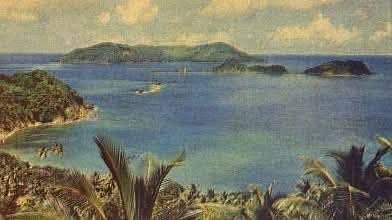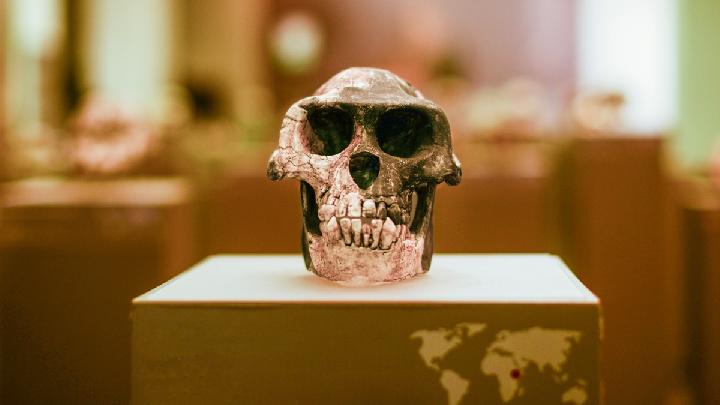Copyright newsday

The planting community of Tobago breathed a sigh of relief over one of the issues that had plagued landowners since it was made a possession of the English monarch. That was the feared ghost of a French takeover, which haunted the island from 1763, reappeared in real life in 1781 and in 1802, and continued to distress the plantocracy. Those fears were put to rest when, in 1815, a treaty was signed, finally ending the prospect of a French takeover. In 1815, the Treaty of Paris confirmed Tobago as a British possession. But there remained other tumultuous issues that would face the ruling class, not least of which was the gathering storm of the anti-slavery movement. In addition, despite coaxing, the performance of the sugar industry remained unsatisfactory. But the administration persevered with strategies it hoped would provide economic salvation. One important appointment was that of the agent for the island. It was felt that such a position should be immediately filled, and the appointee fully empowered to negotiate the island’s affairs for the good of the people. This officer oversaw sales of sugar and buying and shipping items needed on the island as well as handling official and legal matters pertaining to the estates and the colony. A former plantation owner of Hope Estate, Charles Alfred Francklyn, who had relocated to Middlesex, England, was appointed on April 14, 1820, at a salary of £200 per annum. He was instructed to obey all orders and directions from the president of council and speaker of the assembly jointly, or a committee of correspondence which was formed by the island’s administration, and no one else. The problem was that estates continued to change ownership in the context of the intensifying movement of the antislavery society. The 1823 rebellion in British Guiana demonstrated the horrors that could occur if the slavery question was not resolved. In addition, while the lifestyle demands of the plantocracy had not changed, economic realities made them unable to bear the costs, which spelt doom for several estates. The next issue was the need for a courthouse for legal business on the island. In February 1821, the work was advertised, and a contract was offered to Samuel Hall, a clerk, to build a public courthouse on the east side of Market Square, to be constructed at a cost of £13,000 within 18 months. A committee of commission made up of members of council – the Hon William Brasnell and Alexander Mc Gregor and members of the assembly HJ Glanville, JL Kensington and Thomas Blakely – was appointed to inquire into the practicality of establishing a courthouse there and to determine the present occupants of the lots near the present market place and oversee the project. John Buchanan was later appointed commissioner in lieu of John Larkins Kensington, who died. This land had been allocated as poor settlers’ lots on the island’s initial land allocation plan in 1763. The owners were identified: they included Mr John Burnett, who owned lots 1 and 2, and after whom Burnett Street was named, and William Sloane Wilson, rector of the Anglican church, who owned a half of lot no 28, with the crown retaining the other half, as well as lots no 9 and 10. All the others were occupied, with one individual, William Henriques, owning three lots. It is interesting to note that multiple ownership by poor settlers was possible, and that a rector of the Anglican church who received a salary was so classified. John Burnett received £20 13 shillings as compensation. Also very illuminating was the act which was passed periodically by the House of Assembly to provide the salaries of public officers, professionals and craftsmen and to settle debts to people who provided various services to the colony. Among these were services from estates, which included: a payment of £65 eight shillings to Courland Estate for “Negro and mules labour” and to Grafton Estate for “negro labour” (£5 15 shillings), Mary’s Hill Estate for negro labour under the Militia Act and Calder Hall Estate for cartage under the Militia Act. Cinnamon Hill Estate was paid £50 for rent of land for use as Government House and £10 for brushing the pasture in preparation for the review exercise. What is noteworthy is that the labour of enslaved Africans outside the estates carried a price paid not to those who actually did the work, but to their owners. It did not matter that that service was provided during periods of conflict with France, when some were injured and received no compensation. The value of that labour was far more than planters were prepared to pay freed Africans after Emancipation, when they claimed they were, in their own words, “short of labour.” When the work of enslaved Africans is considered, it must be remembered that their jobs were not related only to estate labour: they were also forced to give service in defence of the island, and as hunters and fishermen in support of the palates of their owners. A great demand for skilled labour, including carpenters, blacksmiths, plumbers and repairmen, features in their presence in the list as well as those paid for their services. The list is a preview of what would happen regarding labour demands after Emancipation Payments to other service providers, such as John Cook, who played the church organ and was paid £36, the sexton (£150), clerk of the church (£150) and John Butterwork for repairing the church organ (£21 15 shillings) demonstrated the importance attached to those activities. When the supply fees totalled £15,542 9d, the administration sought to meet the deficit by taxation. A tax of 24 shillings per head was imposed on each enslaved person except in cases where someone owned three or fewer enslaved Africans. There were taxes on all merchants and shopkeepers, barristers, attorneys, solicitors or practitioners of the law, and those who owned and rented dwelling houses belonging or connected to plantations. There were heavy taxes on alcohol: for instance, on brandy, gin or Hollands the tax was nine shillings per gallon. Ships which landed alcohol illegally were subject to a fine of £20. However, despite these measures, the budget deficit remained, and the earnings from sugar production continued to decrease, while the atmosphere on plantations, as in the rest of the region, became increasingly unstable.



